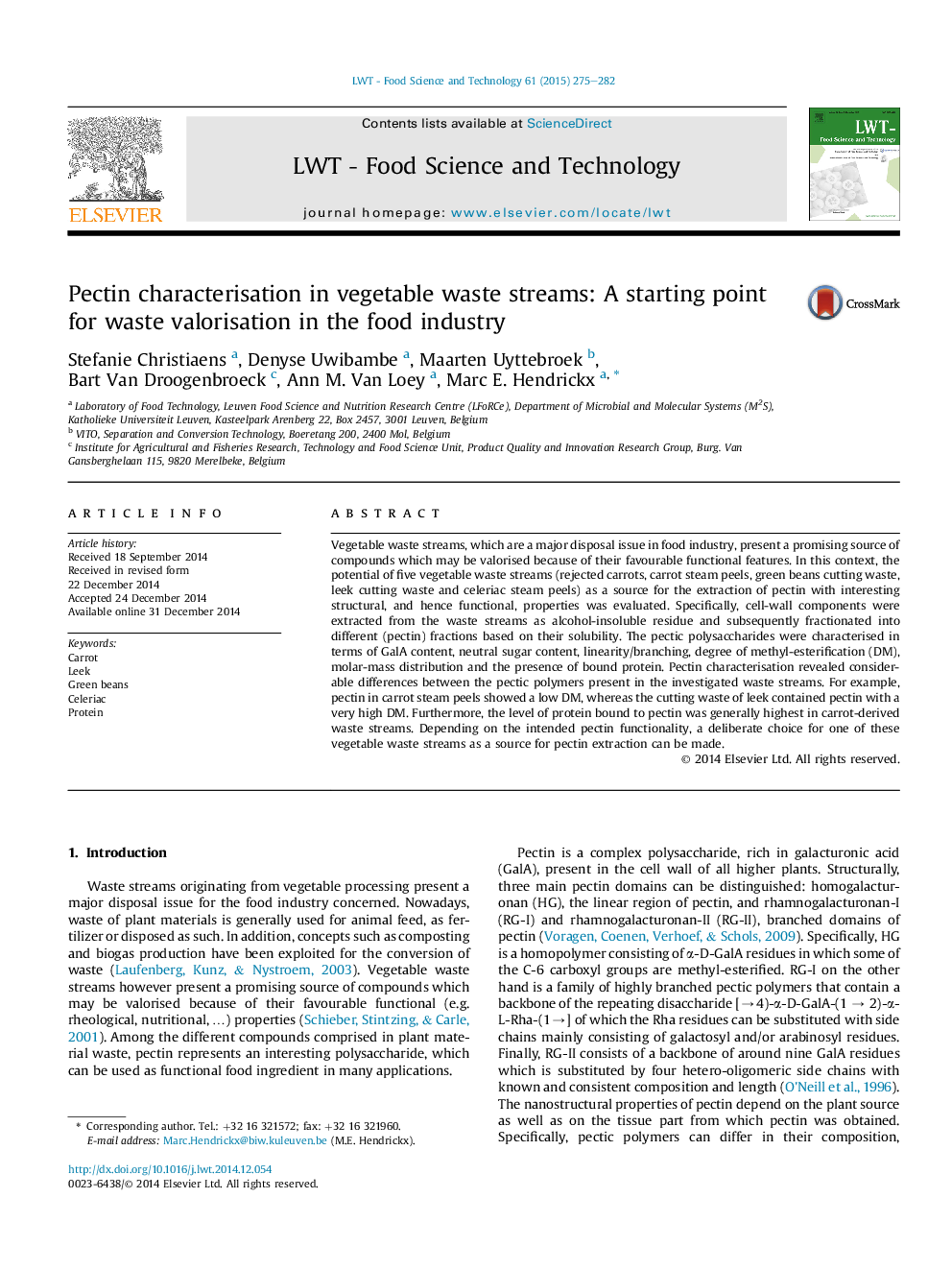| Article ID | Journal | Published Year | Pages | File Type |
|---|---|---|---|---|
| 6401124 | LWT - Food Science and Technology | 2015 | 8 Pages |
â¢Vegetable waste streams can be a source for the extraction of pectin.â¢There are considerable differences in pectin structure between vegetable waste streams.â¢Leek cutting waste contains a large amount of very high-methoxylated pectin.â¢The level of protein bound to pectin is highest in carrot-derived waste streams.
Vegetable waste streams, which are a major disposal issue in food industry, present a promising source of compounds which may be valorised because of their favourable functional features. In this context, the potential of five vegetable waste streams (rejected carrots, carrot steam peels, green beans cutting waste, leek cutting waste and celeriac steam peels) as a source for the extraction of pectin with interesting structural, and hence functional, properties was evaluated. Specifically, cell-wall components were extracted from the waste streams as alcohol-insoluble residue and subsequently fractionated into different (pectin) fractions based on their solubility. The pectic polysaccharides were characterised in terms of GalA content, neutral sugar content, linearity/branching, degree of methyl-esterification (DM), molar-mass distribution and the presence of bound protein. Pectin characterisation revealed considerable differences between the pectic polymers present in the investigated waste streams. For example, pectin in carrot steam peels showed a low DM, whereas the cutting waste of leek contained pectin with a very high DM. Furthermore, the level of protein bound to pectin was generally highest in carrot-derived waste streams. Depending on the intended pectin functionality, a deliberate choice for one of these vegetable waste streams as a source for pectin extraction can be made.
